Autophagy induced by Alexander disease-mutant GFAP accumulation is regulated by p38/MAPK and mTOR signaling pathways
- PMID: 18276609
- PMCID: PMC2902290
- DOI: 10.1093/hmg/ddn042
Autophagy induced by Alexander disease-mutant GFAP accumulation is regulated by p38/MAPK and mTOR signaling pathways
Abstract
Glial fibrillary acidic protein (GFAP) is the principle intermediate filament (IF) protein in astrocytes. Mutations in the GFAP gene lead to Alexander disease (AxD), a rare, fatal neurological disorder characterized by the presence of abnormal astrocytes that contain GFAP protein aggregates, termed Rosenthal fibers (RFs), and the loss of myelin. All GFAP mutations cause the same histopathological defect, i.e. RFs, though little is known how the mutations affect protein accumulation as well as astrocyte function. In this study, we found that GFAP accumulation induces macroautophagy, a key clearance mechanism for prevention of aggregated proteins. This autophagic response is negatively regulated by mammalian target of rapamycin (mTOR). The activation of p38 MAPK by GFAP accumulation is in part responsible for the down-regulation of phosphorylated-mTOR and the subsequent activation of autophagy. Our study suggests that AxD mutant GFAP accumulation stimulates autophagy, in a manner regulated by p38 MAPK and mTOR signaling pathways. Autophagy, in turn, serves as a mechanism to reduce GFAP levels.
Figures
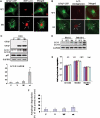
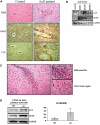
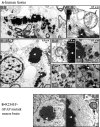

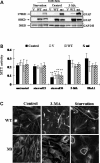
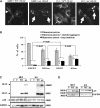



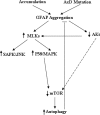
Similar articles
-
Adaptive autophagy in Alexander disease-affected astrocytes.Autophagy. 2008 Jul;4(5):701-3. Epub 2008 Apr 3. Autophagy. 2008. PMID: 18414043 Review.
-
The Alexander disease-causing glial fibrillary acidic protein mutant, R416W, accumulates into Rosenthal fibers by a pathway that involves filament aggregation and the association of alpha B-crystallin and HSP27.Am J Hum Genet. 2006 Aug;79(2):197-213. doi: 10.1086/504411. Epub 2006 Jun 12. Am J Hum Genet. 2006. PMID: 16826512 Free PMC article.
-
Glial fibrillary acidic protein is pathologically modified in Alexander disease.J Biol Chem. 2024 Jul;300(7):107402. doi: 10.1016/j.jbc.2024.107402. Epub 2024 May 21. J Biol Chem. 2024. PMID: 38782207 Free PMC article.
-
Plectin regulates the organization of glial fibrillary acidic protein in Alexander disease.Am J Pathol. 2006 Mar;168(3):888-97. doi: 10.2353/ajpath.2006.051028. Am J Pathol. 2006. PMID: 16507904 Free PMC article.
-
GFAP mutations in Alexander disease.Int J Dev Neurosci. 2002 Jun-Aug;20(3-5):259-68. doi: 10.1016/s0736-5748(02)00019-9. Int J Dev Neurosci. 2002. PMID: 12175861 Review.
Cited by
-
Protein changes in immunodepleted cerebrospinal fluid from a transgenic mouse model of Alexander disease detected using mass spectrometry.J Proteome Res. 2013 Feb 1;12(2):719-28. doi: 10.1021/pr300785h. Epub 2013 Jan 11. J Proteome Res. 2013. PMID: 23272901 Free PMC article.
-
Autophagy in neural stem cells and glia for brain health and diseases.Neural Regen Res. 2024 Apr;19(4):729-736. doi: 10.4103/1673-5374.382227. Neural Regen Res. 2024. PMID: 37843206 Free PMC article. Review.
-
SB202190-induced cell type-specific vacuole formation and defective autophagy do not depend on p38 MAP kinase inhibition.PLoS One. 2011;6(8):e23054. doi: 10.1371/journal.pone.0023054. Epub 2011 Aug 10. PLoS One. 2011. PMID: 21853067 Free PMC article.
-
Alexander disease mutant glial fibrillary acidic protein compromises glutamate transport in astrocytes.J Neuropathol Exp Neurol. 2010 Apr;69(4):335-45. doi: 10.1097/NEN.0b013e3181d3cb52. J Neuropathol Exp Neurol. 2010. PMID: 20448479 Free PMC article.
-
Composition of Rosenthal Fibers, the Protein Aggregate Hallmark of Alexander Disease.J Proteome Res. 2016 Jul 1;15(7):2265-82. doi: 10.1021/acs.jproteome.6b00316. Epub 2016 Jun 2. J Proteome Res. 2016. PMID: 27193225 Free PMC article.
References
-
- Brenner M., Johnson A.B., Boespflug-Tanguy O., Rodriguez D., Goldman J.E., Messing A. Mutations in GFAP, encoding glial fibrillary acidic protein, are associated with Alexander disease. Nat. Genet. 2001;27:117–120. - PubMed
-
- Johnson A.B. Alexander disease: a leukodystrophy caused by a mutation in GFAP. Neurochem. Res. 2004;29:961–964. - PubMed
-
- Li R., Messing A., Goldman J.E., Brenner M. GFAP mutations in Alexander disease. Int. J. Dev. Neurosci. 2002;20:259–268. - PubMed
Publication types
MeSH terms
Substances
Grants and funding
LinkOut - more resources
Full Text Sources
Other Literature Sources
Molecular Biology Databases
Miscellaneous

